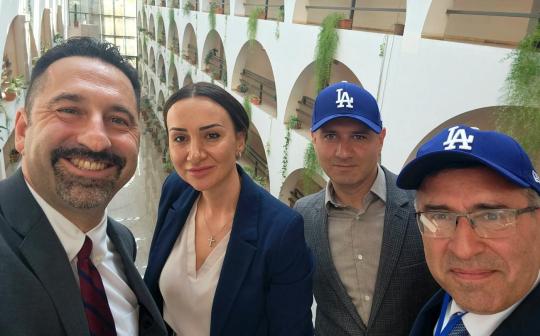Microsoft infographic explores the $206 billion data dividend

Ever heard of a yottabyte?
Just by the name alone, you can probably guess that it’s a lot. (If you don’t have a degree in computer science, it’s a 1 followed by 24 zeros.) But in the coming years, it will become a more common term when describing the massive amounts of data being created and consumed.
Here’s another number, one everyone understands: $206 billion.
That’s the amount of money government organizations around the world can bring in over the next four years in additional revenue if they take advantage of their data, according to a new report from Microsoft and IDC Research.
“Data continues to grow at an exponential rate into volumes that people cannot understand anymore,” said Kim Nelson, executive director for Microsoft’s state and local government solutions, in an interview with StateScoop. “But that also creates an amazing opportunity. With advances in technology, we can harness this data and turn it into real-time information that can impact policy and do it quickly.”
Called the data dividend, the report’s message is simple, though achieving it may be complex: Instead of simply releasing data to the public, as has become the trend in recent years, it’s time for government’s to more fully realize the internal benefits of data production.
Microsoft and IDC have identified four key opportunity areas where they believe government organizations around the globe can drive greater returns and increased value from their data: employee productivity, operational improvement, product innovation and citizen-facing services.
“It’s about helping governments look across vertical areas for opportunities to combine different kinds of data to create new insights. This not only has the potential to save money, but also improve the level of service to citizens,” Nelson said.
For example, she pointed to Microsoft’s Domain Awareness System in New York City, where the police department is able to use a sophisticated law enforcement technology solution that aggregates and analyzes public safety data in real time. By doing so, investigators got a comprehensive view of potential threats and criminal activity.
This is helpful in a case such as when a suspicious package is left in Times Square. With DAS, the NYPD can actively search for suspects using advanced technologies such as smart cameras and license plate readers.
“That system utilizes data from cameras and sensors from all over the city, but is able to make sense of it quickly and with the speed needed to make it useful, not months from now but right now,” Nelson said. “That gives governments a huge benefit as they are now have the tools needed to make the best decision.”
Nelson admitted situations like this were not available as recently as a few years ago, but analytical technology has progressed to become a reality. She said governments across the world are still learning that if they can simply provide the data for developers and civic-minded hackers, they’ve done their duty when it comes to open data.
But Nelson said governments need to take this further and look at ways they can use that data themselves and use it for their own benefit. She pointed to one example in Seattle where a smart building coalition used building data in the city’s business district to lower energy costs.
The result brought together sensor data from millions of square feet of building space, including everything from air conditioning systems to elevator shafts. The city was able to reduce the area’s energy costs around 25 percent.
Jeff Friedman, the director of e-government business development at Microsoft, was co-director of Philadelphia Mayor Michael Nutter’s Office of New Urban Mechanics before joining Microsoft.
During his time with the city, he helped launch OpenDataPhilly, the city’s open data portal, an initiative solidified by a subsequent executive order from Mayor Nutter. Since the spring 2011, the portal has grown from just a handful of datasets to hundreds, with civic engagement being spurred by the release of data and civic technologists eager to work with it .
“The relationship between open data releases and the external development of apps and analytics has been inspirational to government,” Friedman said. “Now we’re seeing a shift toward government not only being a primary provider but a major consumer of this data, analyzing it to inform actionable strategies that help provide effective and efficient services that thrill and delight citizens.”







